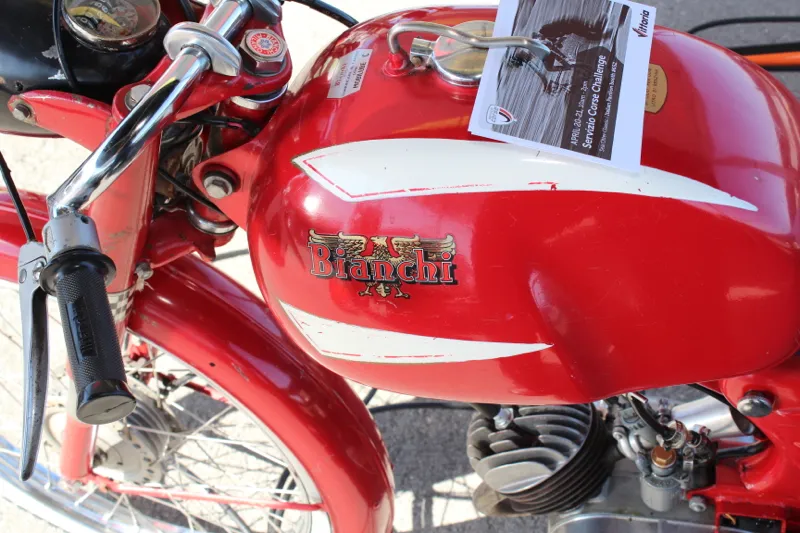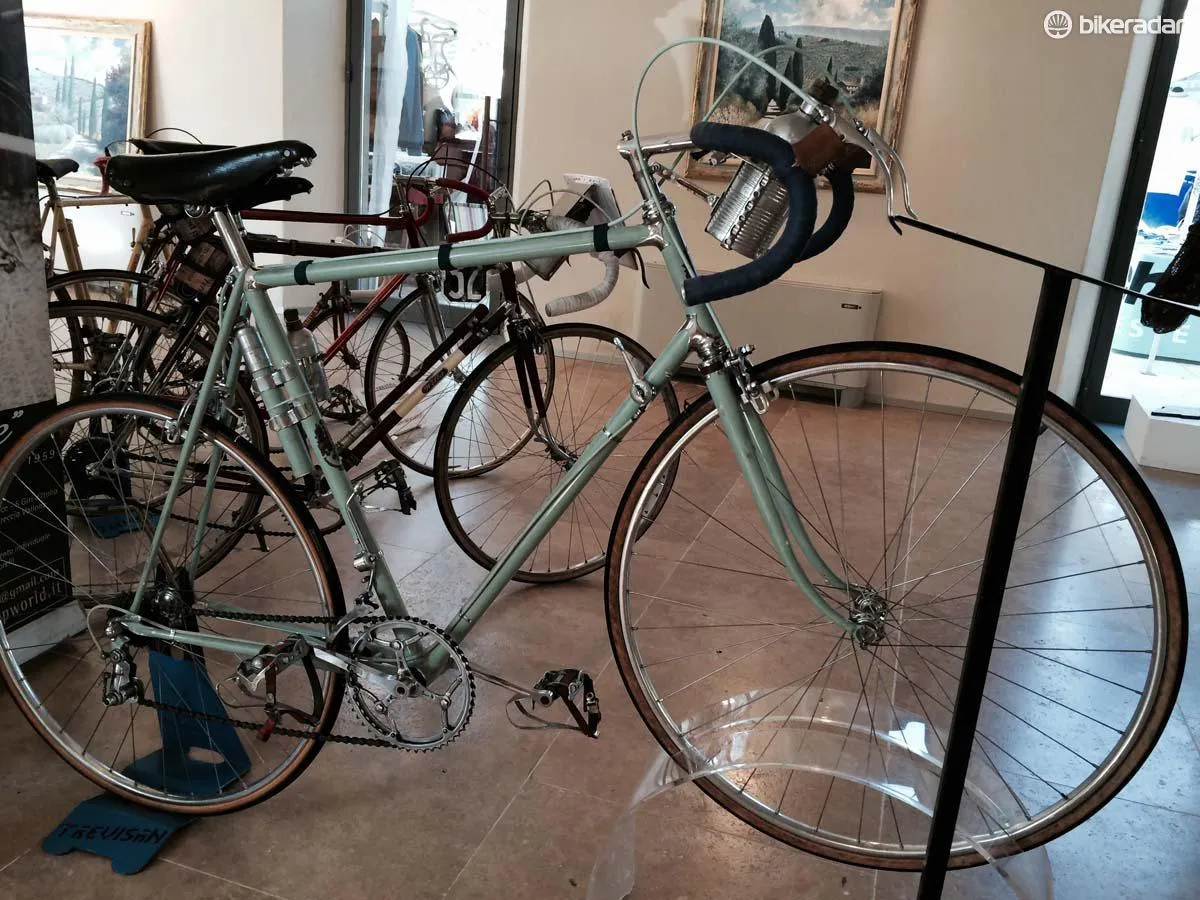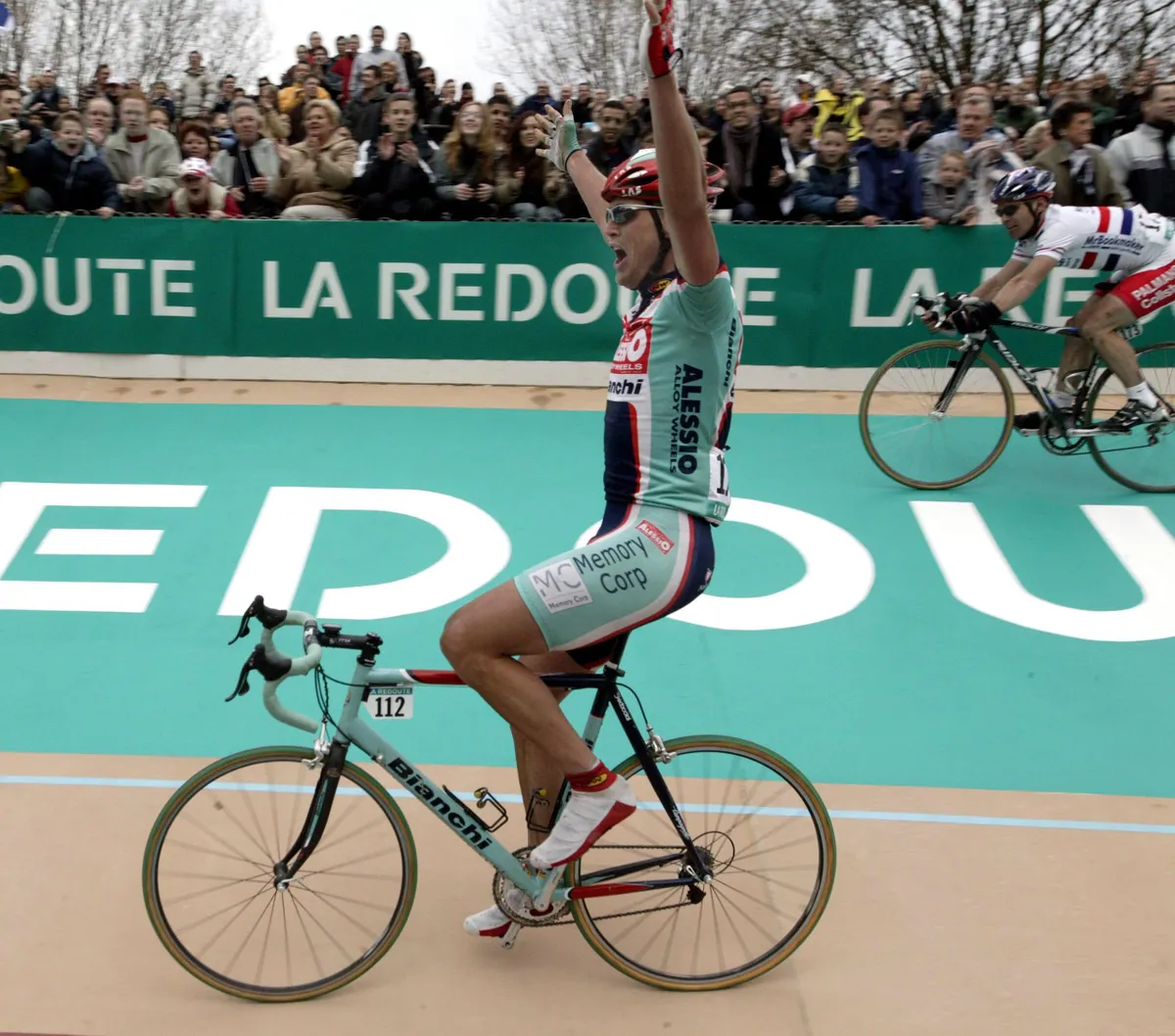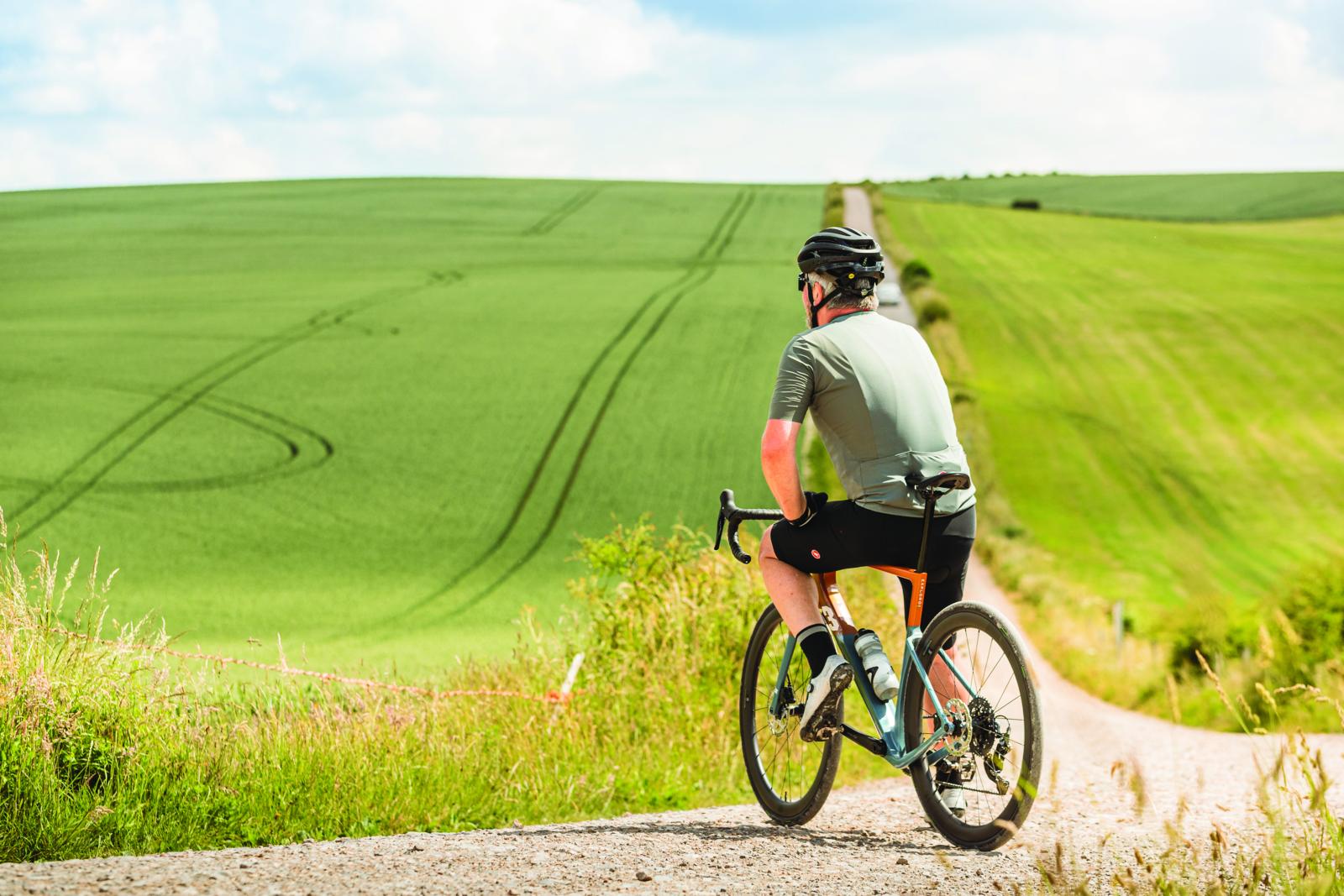Bianchi’s celeste colour is as synonymous with the Milanese bike maker as Rosso red is with Maranello’s Ferrari.
Bianchi has been a cornerstone of racing for 128 years, with a long list of legends riding celeste bikes to victory.
Many will recall watching Marco Pantani in celeste dominating the mountains of France and Italy to win both of those countries' major tours in 1998.
You can also see footage of Felice Gimondi’s epic battles with Eddy Merckx or iconic pictures of Fausto Coppi dressed in celeste aboard his steel Bianchi.

But Edoardo Bianchi’s history is much more than bicycles and professional racing; it's part of the history of engineering in Italy over the last 140 years.
1885, 7 via Nirone

Edoardo Bianchi was born in 1865 in Milan and raised in an orphanage. He began as an engineer’s apprentice before opening a workshop at 7 via Nirone in 1885, specialising in producing velocipedes and bone-shakers for the wealthy Milanese.
Europe, at the time, was becoming increasingly dependent on bicycles and Bianchi became obsessed with producing a bike that would be easy to ride for everyone, rather than the usual acrobatics required to mount and ride big-wheel penny-farthing style bikes.
He was at first influenced by Ernest Michaux's advanced bicycle, where the smaller wheel was mounted at the front rather than the rear.
Bianchi, though, wanted a bike with wheels of equal dimensions (which would help with production and costs). This design was almost immediately copied by other makers in Italy’s Lombardy region, and therefore signalled the birth of the Italian bike industry as we know it today.
Early success

Racing of bicycles began almost as early as their invention, and in 1897 Bianchi entered into racing with Ferdinando Tommaselli. Victory was secured in the Italian championships on a bike complete with Scotsman John Boyd Dunlop’s then-revolutionary air-filled tyres.
Following this, rider and bike were announced to the European stage by winning the 1899 French Grand Prix (at the time, the premier cycling event in the world).
At this time, Bianchi was also experimenting with motorised bicycles, and by 1902, the first in a long line of motorcycles went on sale, followed quickly by cars. The bicycle range expanded to seven models, with a D2 lightweight race bike among touring bicycles and standard race machines.
Tommaselli still raced bicycles for the company, but by 1908, he’d progressed to piloting racing cars for the brand. Bianchi, however, had developed a full cycle racing team with a revolutionary training programme devised by team manager Erminio Cavedini.
This move brought great success to principal rider Giovanni Rossignoli, winning the 1905 Milan-Turin race, the 340 km-long national endurance race and helping teammate Giovanni Cuniolo win the King’s Cup.
Racing legends

As Bianchi became more and more involved in racing in all its early forms, the first major Italian racing star was Tazio Nuvolari. A racing car legend, in his later career he notched up an astounding 95 wins piloting Bianchi’s 350 Freccia Celeste motorbike.
The Moto Bianchi team attracted such attention that the team was paid to attend most races, given that this would practically guarantee the organisers a successful event.
In cycling, Bianchi had equal success with Costante Girardengo, winning the Giro d’ Lombardia, Milan-San Remo, and a host of other important races. The company, meanwhile, had grown into one of Italy’s biggest industrial concerns, producing 45,000 bicycles in 1915 alone.
Il Campionissimo

Bianchi’s most revered rider, Fausto Coppi, emerged onto the racing scene by winning the 1940 Giro at just 20 years old, while riding for Bianchi’s Italian rival brand Legnano, and two years later setting the world hour record at 45.798km.
The record stood for 14 years (until it was bettered by Jacques Anquetil). The Second World War perhaps robbed Coppi of his best years, but the records he set are among the greatest feats in professional cycling.
His most impressive period came post-war, when in 1949, riding a Bianchi Super Corsa, and again in 1952, he won both the Giro and the Tour. In total, he took five wins in the Giro (only matched to this day by Merckx and Binda).
Bianchi, in celebration, collaborated with Campagnolo on a special-edition Coppi Tour de France model. In this same period, Coppi also took 10 classics wins. He spent most of his career with Gino Bartali as his arch rival, dividing the Italian tifosi into rival camps.
Fausto, a household name in Italy, became dogged by scandal when, in 1953, he left his wife to live with Giula Occhini, ‘La Dama Bianca’ (the lady in white).
Sadly in 1959, on a cycling and game-hunting trip to Africa’s upper Volta (now Burkina Faso), he contracted malaria. The infection became active back in Italy but was diagnosed too late to treat, and Coppi died aged 40.

1964, the end?
After the end of the Second World War, there were disastrous effects on the Italian economy, and political and trade restrictions in the country. Bianchi’s factories had been all but destroyed by allied bombing, but the company tried to rebuild to its former glories as one of the leaders of Italian motor engineering.
It never managed to retain its former glories, and in 1964, the company was on the brink of bankruptcy; the motor side of the business collapsed, and all that remained from 1964 was the still-profitable bicycle business.
Hometown heroes
A new Bianchi hero emerged with Felice Gimondi (nicknamed ‘the Phoenix’) when, in 1965, he won the Tour de France. It was an incredible feat for a first-year professional at only 20 years old and coming in as a last-minute replacement.
Gimondi had already competed in the Giro of 1965, coming an amazing third in support of fellow Italian and Bianchi rider Vittorio Adorni.
The bike he rode was a Bianchi Specialissima, replete with first-generation Campagnolo Record. The model still exists today.
He followed up with the Vuelta (1968), the Giro (1967, 69 and 76), and also won Paris-Roubaix and the Giro di Lombardia. Gimondi still holds the record for most podium finishes in the Giro – three times a winner, twice second and four times third.
He was also a world champion in 1973, silver medalist in 1971, and took bronze in 1970 (when the event was held in Leicester).
Succeeding Gimondi as Bianchi’s star, a very difficult act to follow, was Gianni Bugno in the late 80s and early 90s. He was perhaps Miguel Indurain’s biggest rival.
Bugno tasted victory in the 1990 Giro, riding a Reparto Corsa made in Italy, Specialissima X4. Then in 1991, he took the world championships double, winning both the road race and time trial events before retaining the road race title in 1992.
His 1992 bike was the groundbreaking Bianchi CX Carbon Pro—the first carbon bike from Bianchi’s Reparto Corsa department, made in collaboration with carbon fibre pioneers Alan. It was made in a similar fashion to the French TVT framesets made famous by Greg Lemond.

Bugno retired in 1998 and became a helicopter pilot, piloting a camera copter covering the Giro.
Bianchi riders – legends in celeste
- Ferdinando Tommaselli: Bianchi’s first winner in the International Grand Prix of Paris in 1899
- Fausto Coppi: Il campinissimo ‘the champion of champions’
- Gino Bartali: Coppi’s greatest rival was also his teammate
- Felice Gimondi: Winner of all the major tours and Eddy Merckx’s nemesis
- Gianni Bugno: Indurain considered Bugno his biggest threat, the world champion in 1991 and 1992
- Evgeni Berzin: Bianchi/Gewiss team rider whose best year was 1994, when at the age of 24 he won both the Giro and Liege-Bastiogne-Liege
- Marco Pantani: 1998 was Pantani’s greatest year, when he won both the Giro and the Tour
- Mario Cipollini: Ended his career at Bianchi (before the shortest of comebacks with Rock racing)
- Jan Ullrich: After his superb tour victory in 1997, his career was overshadowed by Lance Armstrong, although his battle in the 2003 tour for the Bianchi-sponsored former Coast team was among the best tours of recent years
- Magnus Backstedt: The Swedish powerhouse rode a custom titanium Bianchi to win the 2004 Paris-Roubaix
- Julian Absalon: The fast French off-roader won the 2004 Olympic gold medal for mountain biking aboard a Bianchi.
- Danilo DiLuca: Won the first pro-tour title riding for Bianchi, but his latter career was dogged by allegations of doping
- Geraint Thomas, Steve Cummings, Chris Froome: All got their first taste of the professional peloton riding for Bianchi-sponsored Barloworld
- Mauricio Soler: Colombian climber who took the KOM classification riding for Barloworld (as a wild card entry) in the 2007 Tour de France. Soler’s career was cut short by a horrific crash in the 2011 Tour of Switzerland, which led to a three-week induced coma
Following Bugno and Bianchi’s co-sponsorship of the Guises team came the iconic Mercatone Uno years with Marco Pantani as the enigmatic team leader. Pantani completed the Giro-Tour double in 1998, riding the iconic Mega Pro XL.

Then came the ill-fated Coast team featuring a recently transferred Jan Ullrich from Telekom, but before the start of the 2003 Tour, the Coast sponsorship collapsed.
This meant, in perhaps Ullrich’s best (losing) battle with Lance Armstrong, we were treated to Ullrich and his team riding in a near-sponsor-free reimagining of the classic design as worn by il Campionissimo, with Bianchi emblazoned on the jersey and shorts.

Ullrich's bike was a custom-made version of the production EV3.A super-light aluminium race bike. It was made using Bianchi’s EV3 Evolution tubing, combined with a forged bottom bracket shell and CNC-machined dropouts.
At the time, it was close to the pinnacle of aluminium frame fabrications, with Campagnolo Super Record, Mavic wheels and huge 177.5mm cranks. Ullrich's Celeste rocket tipped the scales at an impressive 7.5kg in full race trim.

Swedish powerhouse Magnus Backstedt win the 2004 Paris-Roubaix in epic style, riding a custom Bianchi Titanium EV with its titanium tubing filled with an EV foam core to add strength and damping.
It represented Bianchi's return to the top of a classics podium after a few false starts, such as Johan Museeuw's ill-fated 1994 attempt, riding a Bianchi full-suspension road bike.
The modern age

Bianchi has been quiet on the road in recent times regarding the Giro and the Tour, though they’ve remained prominent in road racing. Lars Boom took the cobbled stage 5 in the 2014 Tour in a solo effort.
Sponsorship has continued with Belkin, which became LottoNL-Jumbo, Team BikeExchange in 2021, and most recently Arkéa-Samsic (now Arkéa-BB Hotels).
Successes have come elsewhere. Particularly with the escalation from medium-to-low tier, to global juggernaut of Lotto-Jumbo, then Jumbo-Visma - indeed happened with Bianchi. Over that tenure, Primoz Roglic won three editions of La Vuelta (2019, 2020 and 2021), and Olympic TT title (2021), lost a Tour de France (2020) on the penultimate day. One Liege-Bastogne-Liege (2020); Wout Van Aert won Milan-Sanremo (2020), Strade Bianche (2020), Gent-Wevelgem (2021), Amstel Gold Race (2021). The team netted 51 wins in 2019 and 43 in 2021.

Successes have come elsewhere – in mountain biking, the Bianchi-Motorex team with José Antonio Hermida and Julien Absalon. The latter won gold in the men's mountain biking at the 2004 Olympics.
Kevin Vauquelin, riding a Bianchi Oltre RC (Reparto Corsa), won stage 2 of the 2024 Tour de France in Bologna, Italy – a fitting update for a brand so steeped in success in the two biggest road cycling races.
Bianchi has been a staple of Italian cycling and racing for more than a century. Legendary names such as Reparto Corsa and Specialissima have marked Bianchi’s race-prepared machines for decades.
We’ll see the Specialissima on the start line once again at this year's Giro, 69 years after it debuted. I couldn’t name another brand with a race bike with that sort of heritage.
Bravissimo Bianchi, and buona fortuna in Albania.




